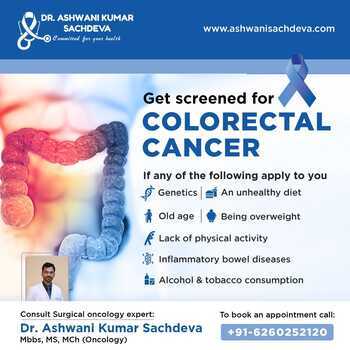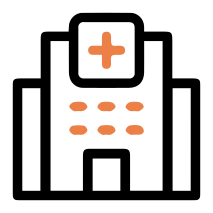Lumpy Skin Disease (LSD) is a viral disease primarily affecting cattle, characterized by the development of nodules or lumps on the skin. It is caused by the Lumpy Skin Disease Virus (LSDV), which is a member of the Capripoxvirus genus within the Poxviridae family. This disease is of significant concern in the livestock industry due to its impact on cattle health, productivity, and trade. The condition, though rarely fatal, can lead to severe economic losses due to reduced milk production, decreased weight gain, and the cost of treatment and control measures.
Causes of Lumpy Skin Disease
Lumpy Skin Disease is caused by the Lumpy Skin Disease Virus (LSDV), a virus that belongs to the Capripoxvirus genus. LSDV is closely related to other poxviruses affecting livestock, such as the sheeppox and goatpox viruses. The virus is primarily transmitted through arthropod vectors, including mosquitoes, biting flies, and ticks, which can spread the virus from infected to healthy animals.
Direct contact with infected animals or their bodily fluids can also lead to transmission. The virus can be present in the saliva, nasal discharge, and other secretions of infected animals. Contaminated equipment, feed, and water troughs can act as secondary sources of infection. The disease is highly contagious among cattle, especially in areas with high mosquito populations or where animals are kept in close quarters.
Symptoms of Lumpy Skin Disease
The clinical signs of Lumpy Skin Disease vary depending on the severity of the infection and the health of the affected animal. The disease manifests through a range of symptoms, with the most notable being the development of skin nodules or lumps.
- Skin Nodules: One of the hallmark signs of LSD is the presence of firm, round nodules on the skin. These nodules can range in size from a few millimeters to several centimeters in diameter and can appear anywhere on the body, though they are commonly found on the neck, shoulders, and legs. The nodules may be single or multiple and can coalesce to form larger lesions.
- Fever: Infected cattle often develop a high fever, which can be a sign of the body’s response to the viral infection. The fever is usually accompanied by general lethargy and reduced appetite.
- Skin Lesions: The nodules on the skin can evolve into ulcers or necrotic lesions. In severe cases, the skin can become thickened and cracked, leading to secondary bacterial infections.
- Swelling: In addition to skin nodules, infected animals may experience swelling in the legs, udder, or other body parts. This swelling can be painful and lead to difficulties in movement and other complications.
- Respiratory Symptoms: Some animals may exhibit respiratory signs such as coughing or nasal discharge, although these are less common compared to the skin symptoms.
- Reduced Milk Production: Dairy cattle with LSD may show a significant drop in milk production due to stress, fever, and discomfort caused by the skin lesions.
Types of Lumpy Skin Disease
Lumpy Skin Disease can be categorized based on the severity of the infection and the clinical manifestations observed. Although the disease itself does not have distinct types, variations in clinical presentation can be noted:
- Acute LSD: This form of the disease is characterized by a sudden onset of symptoms, including high fever, extensive skin nodules, and significant swelling. Acute LSD can lead to severe health issues, including secondary bacterial infections and complications due to systemic involvement.
- Chronic LSD: In some cases, the disease may present in a less severe form, with fewer skin nodules and milder symptoms. Chronic LSD can be characterized by prolonged skin lesions that persist over a longer period, affecting the animal’s health and productivity.
- Subclinical LSD: Some cattle may carry the virus without showing any obvious symptoms. These subclinical cases can still contribute to the spread of the disease, as these animals can serve as reservoirs for the virus.
Treatment of Lumpy Skin Disease
There is no specific antiviral treatment for Lumpy Skin Disease. Management of the disease primarily focuses on supportive care, prevention, and control measures. The treatment approach includes:
- Supportive Care: Providing supportive care to affected animals is essential to help them recover. This includes ensuring they have access to clean water, nutritious feed, and a comfortable environment. Pain relief and anti-inflammatory medications may be used to reduce discomfort and swelling.
- Antibiotic Therapy: Secondary bacterial infections can occur due to skin lesions and ulcers. Antibiotic therapy may be administered to manage these secondary infections and prevent complications.
- Isolation: Infected animals should be isolated from healthy cattle to prevent the spread of the virus. Proper hygiene and sanitation practices should be maintained to reduce the risk of transmission through contaminated equipment or facilities.
- Vector Control: Controlling the population of arthropod vectors is crucial in preventing the spread of LSD. This can be achieved through the use of insecticides, fly traps, and maintaining good hygiene in animal housing areas.
- Vaccination: Vaccination is one of the most effective methods to prevent Lumpy Skin Disease. Several vaccines have been developed to protect cattle from LSD. Vaccination programs should be implemented based on veterinary recommendations and regional disease prevalence.
- Biosecurity Measures: Implementing biosecurity measures, such as restricting the movement of cattle between farms and ensuring that imported animals are free from the disease, can help in controlling the spread of LSD.
FAQs about Lumpy Skin Disease
What causes Lumpy Skin Disease in cattle?
Lumpy Skin Disease (LSD) in cattle is caused by the Lumpy Skin Disease Virus (LSDV), which is a member of the Capripoxvirus genus within the Poxviridae family. This virus is closely related to other poxviruses that affect livestock, such as sheeppox and goatpox. LSDV primarily spreads through arthropod vectors like mosquitoes, biting flies, and ticks, which transmit the virus from infected to healthy animals. Direct contact with infected animals, their bodily fluids, and contaminated equipment can also facilitate transmission. Understanding the virus’s transmission pathways is essential for implementing effective control measures to prevent and manage outbreaks.
What are the main symptoms of Lumpy Skin Disease in cattle?
The main symptoms of Lumpy Skin Disease (LSD) in cattle include the development of firm, round nodules or lumps on the skin, which can appear anywhere on the body but are commonly found on the neck, shoulders, and legs. Infected cattle may also experience high fever, general lethargy, reduced appetite, and significant swelling in various body parts. The skin nodules can evolve into ulcers or necrotic lesions, leading to thickened and cracked skin. Some animals may exhibit respiratory symptoms, such as coughing or nasal discharge, and a significant drop in milk production can occur in dairy cattle. The severity of symptoms can vary depending on the form of the disease and the overall health of the animal.
How is Lumpy Skin Disease diagnosed?
Diagnosing Lumpy Skin Disease (LSD) involves a combination of clinical evaluation and laboratory testing. The process begins with a physical examination of the affected cattle to assess the characteristic skin nodules and other symptoms. Veterinary professionals may also use ultrasound imaging to evaluate the extent of skin lesions. Laboratory tests, such as polymerase chain reaction (PCR) assays, can be conducted to detect the presence of Lumpy Skin Disease Virus (LSDV) DNA in samples from skin lesions or other bodily fluids. Serological tests may also be used to detect antibodies against LSDV. Accurate diagnosis is crucial for effective disease management and control measures.
What are the treatment options for Lumpy Skin Disease?
There is no specific antiviral treatment for Lumpy Skin Disease (LSD). Management focuses on supportive care, preventing secondary infections, and controlling the spread of the disease. Supportive care includes providing clean water, nutritious feed, and a comfortable environment for affected cattle. Pain relief and anti-inflammatory medications may be used to reduce discomfort and swelling. Antibiotic therapy may be necessary to manage secondary bacterial infections resulting from skin lesions. Isolating infected animals from healthy cattle and maintaining good hygiene are important for preventing transmission. Vector control measures, such as using insecticides and fly traps, can help reduce the spread of LSDV. Vaccination is a key preventive measure, with several vaccines available to protect cattle from LSD.
How can Lumpy Skin Disease be prevented?
Preventing Lumpy Skin Disease (LSD) involves a combination of vaccination, vector control, and biosecurity measures. Vaccination is one of the most effective ways to protect cattle from LSD, and vaccination programs should be implemented based on veterinary recommendations and regional disease prevalence. Controlling arthropod vectors through the use of insecticides, fly traps, and maintaining clean animal housing areas can help prevent the spread of the virus. Implementing strict biosecurity measures, such as isolating new or infected animals and ensuring that imported cattle are free from the disease, is crucial for controlling outbreaks. Regular monitoring and adherence to recommended preventive practices are essential for maintaining herd health and preventing LSD.
What types of vaccines are available for Lumpy Skin Disease?
Several vaccines are available for Lumpy Skin Disease (LSD) and have been developed to protect cattle from the virus. These vaccines are typically live attenuated vaccines, which contain weakened forms of the Lumpy Skin Disease Virus (LSDV) that stimulate an immune response without causing the disease. Some vaccines are formulated with additional adjuvants to enhance the immune response. Vaccination programs should be tailored to the specific needs of the region and herd, with the timing and frequency of vaccination based on veterinary recommendations. It is important to use vaccines that are approved and tested for efficacy and safety to ensure optimal protection for
cattle.
Are there any risks associated with Lumpy Skin Disease vaccines?
Like all vaccines, those for Lumpy Skin Disease (LSD) can have potential risks and side effects. Common side effects of LSD vaccines may include mild local reactions at the injection site, such as swelling or tenderness. In rare cases, vaccinated cattle may experience mild fever or lethargy as part of the immune response. Serious adverse reactions are uncommon but can occur. It is important to follow vaccination protocols and guidelines provided by veterinary professionals to minimize risks. Monitoring vaccinated cattle for any adverse reactions and reporting them to a veterinarian can help ensure the safe and effective use of vaccines.
How does Lumpy Skin Disease impact cattle productivity?
Lumpy Skin Disease (LSD) can significantly impact cattle productivity in several ways. Infected animals may experience a decrease in milk production, as the disease causes discomfort, fever, and stress. Skin lesions and swelling can affect the animal’s ability to graze, move, and interact normally, leading to reduced feed intake and weight gain. The overall health and productivity of affected cattle may be compromised due to the physical and physiological effects of the disease. Additionally, the cost of treatment, control measures, and potential loss of animals can result in economic losses for livestock producers. Effective management and prevention strategies are essential for mitigating the impact of LSD on cattle productivity.
What are the biosecurity measures for controlling Lumpy Skin Disease?
Biosecurity measures for controlling Lumpy Skin Disease (LSD) focus on preventing the introduction and spread of the disease within and between herds. Key biosecurity practices include isolating new or infected animals to prevent contact with healthy cattle. Maintaining clean and hygienic animal housing areas, including regular disinfection of equipment and facilities, can reduce the risk of contamination. Implementing vector control measures, such as using insecticides and fly traps, helps minimize the spread of the virus by arthropod vectors. Restricting the movement of cattle between farms and ensuring that imported animals are free from LSD are also important for controlling outbreaks. Adhering to strict biosecurity protocols is crucial for managing and preventing the spread of LSD.
How often should cattle be vaccinated against Lumpy Skin Disease?
The frequency of vaccination against Lumpy Skin Disease (LSD) depends on several factors, including regional disease prevalence, veterinary recommendations, and the specific vaccine used. In general, cattle should be vaccinated according to the schedule provided by the vaccine manufacturer and veterinary professionals. Initial vaccination is typically administered to young cattle or new arrivals, followed by booster doses at recommended intervals to maintain immunity. In areas with high disease risk or during outbreaks, more frequent vaccination may be advised. It is important to follow the vaccination schedule and guidelines to ensure effective protection for cattle and prevent the spread of LSD.











 and then
and then